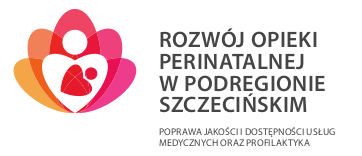BREASTFEEDING
Breastfeeding is the optimum and physiological infant feeding method. The World Health Organization recommends to feed babies exclusively with mother’s milk up to 6 months of age, then, to continue breastfeeding for a period of two years with the inclusion of other food, depending on the age of the infant. Breastfeeding ensures the child’s optimum weight gain, along with its appropriate intellectual and motor development. Infants fed with human milk are less susceptible to cot death syndrome. Mother’s milk, due to the presence of growth factors, anti-inflammatory agents and free amino acids stimulates alimentary tract development, prevents acute infections, improves mobility and reduces the risk of necrotizing enterocolitis in newborns. Furthermore, it affects the formation of microflora in the alimentary tract. In the intestines of breast-fed children, microorganisms of Lactobacillus bifidus family are present to prevent the invasion of other microorganisms by acidifying the contents of the alimentary tract. The resistance of the young organism also grows, owing to immunoglobulins that act locally on the mucosa of the alimentary, respiratory and urinary tracts. Leukocytes (neutrophils and macrophages) along with lysozyme from mother’s milk, allow phagocytosis, or else bacteria cells killing and destruction. Another anti-infective agent is the protein, with antimicrobial properties – the lactoferrin. The mechanism of its action consists in blocking the availability of iron to bacteria. Mother’s milk is an excellent source of vitamins and nutrients. It automatically adapts to the needs of the growing infant. The amount of nutrients depends on the period of lactation, time of day and the feeding phase. Polyunsaturated long chain fatty acids, which are not contained in the cow’s milk ensure the proper development of the child’s nervous system and his sight. Mother’s milk is available at any moment, “ready to have”, at the proper temperature, easier to digest than modified milk. Breastfeeding reduces the costs of child nutrition. Breastfed children rarely suffer from diabetes type 1 and type 2, from obesity, dyslipidemia, coronary heart disease, asthma, atopic dermatitis and allergies in their later period of life. Breast sucking fosters the development of jaws in children and the infant’s malocclusion. In women, it reduces the risk of postpartum haemorrhage in consequence of increased production of oxytocin, which accelerates the contraction of the uterus in the post-childbirth period and reduces the risk of anemia. In addition, breast-feeding helps in the prevention of breast and ovarian cancer, and osteoporosis. Apart from biological points of view, there are also psychological aspects. Breastfeeding mothers suffer less frequently from postpartum depression. The nearness and contact between the child and the body of his mother embodies the love itself. Breastfeeding ensures the child a sense of security, strengthens the emotional bond with his mother, promotes the development of confidence and reduces stress level. On the other hand, it gives mothers the opportunity to withdraw from the rush of everyday life. Mothers who consciously take up a decision to breastfeed have more willpower and patience to overcome difficulties in the early days of motherhood.




